Assignment Description: For this assignment, create a PowerPoint presentation based on the following case studies. Read You Be the Judge presented at the end of Chapter 5 (Guido, p. 65-66) which begins, “The patient had an apparent cardiac event at home… and answer the following questions: What evidence would you collect from the clinic to determine what standard of care was delivered to this patient both before he was seen and at the time he was seen in the clinic? What might the family’s attorney allege in a supplemental report? How would one decide the standard of care for this patient? How would you decide the outcome of this case? Read the case study You be the Judge, presented at the end of Chapter 6 (Guido, p. 94) which begins, “The day after surgery the nurse removed a drainage tube…” and answer these questions: Do the facts of the case support the plaintiff’s reliance on res ipsa loquitur? Does the fact that the defense did produce expert witness testimony negate a success
Verified Answer
Objectives
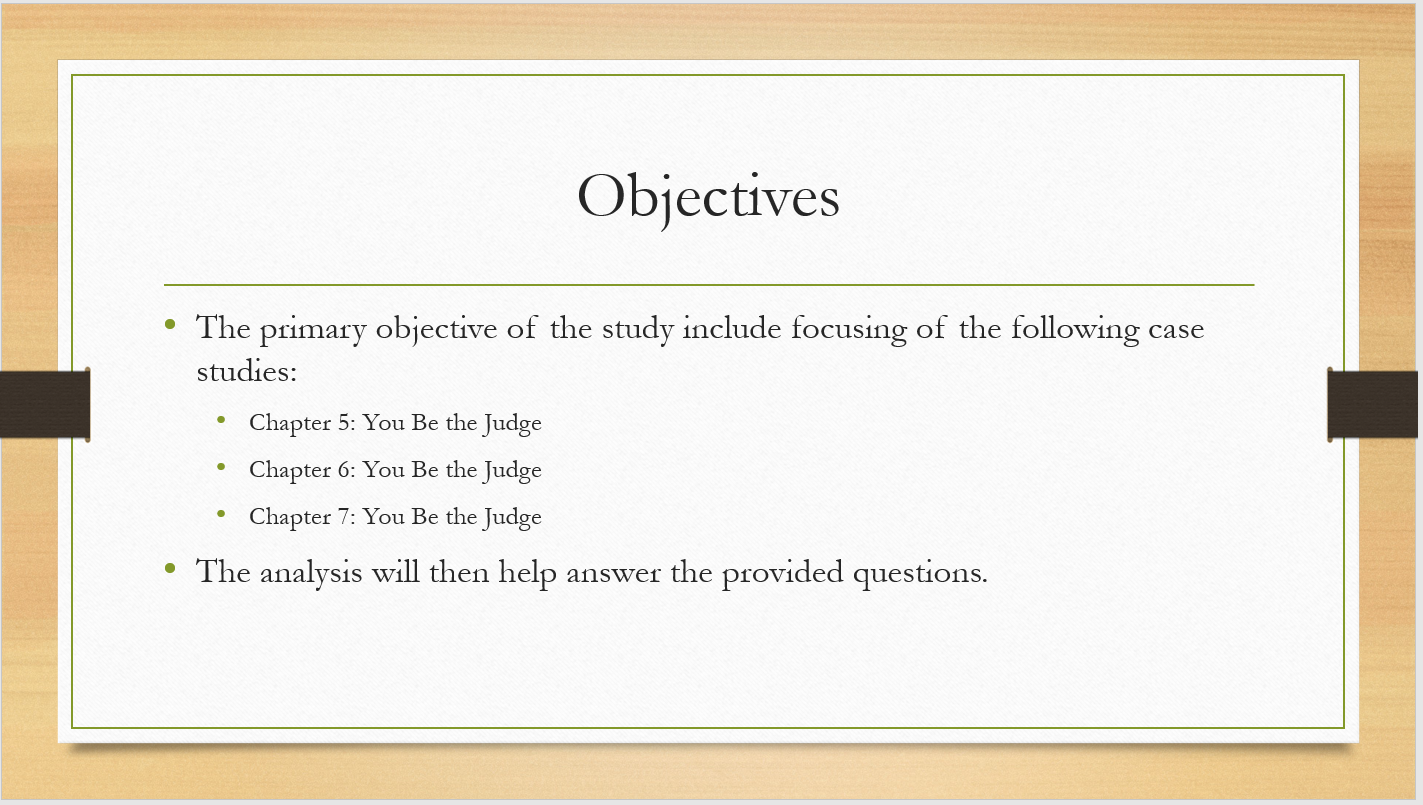
The PowerPoint presentation is based on the analysis of three different case studies within the coursebook and using the information to answer the provided prompts. The analysis would be efficient when creating a means within which appropriate measures are taken and how a person can interpret information based on available data.
Chapter 5 case study
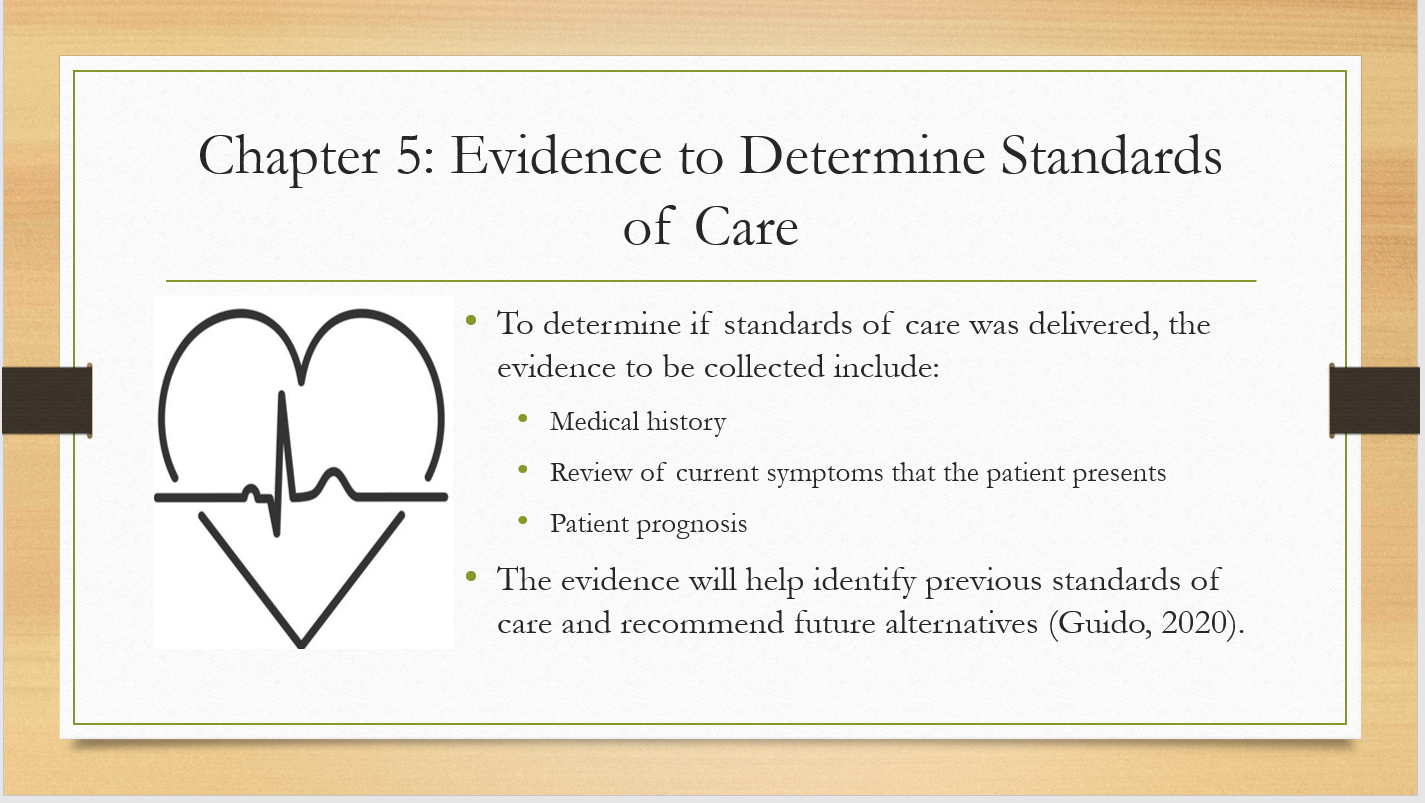
The extent of a patient’s heart problem is determined by their medical history and an assessment of their current symptoms. This can also help exclude other potential causes for their condition (Guido, 2020). It is important to consider the patient’s prognosis in deciding how to manage their illness. Information about any tests or procedures that have been done on the patient can also be significant.
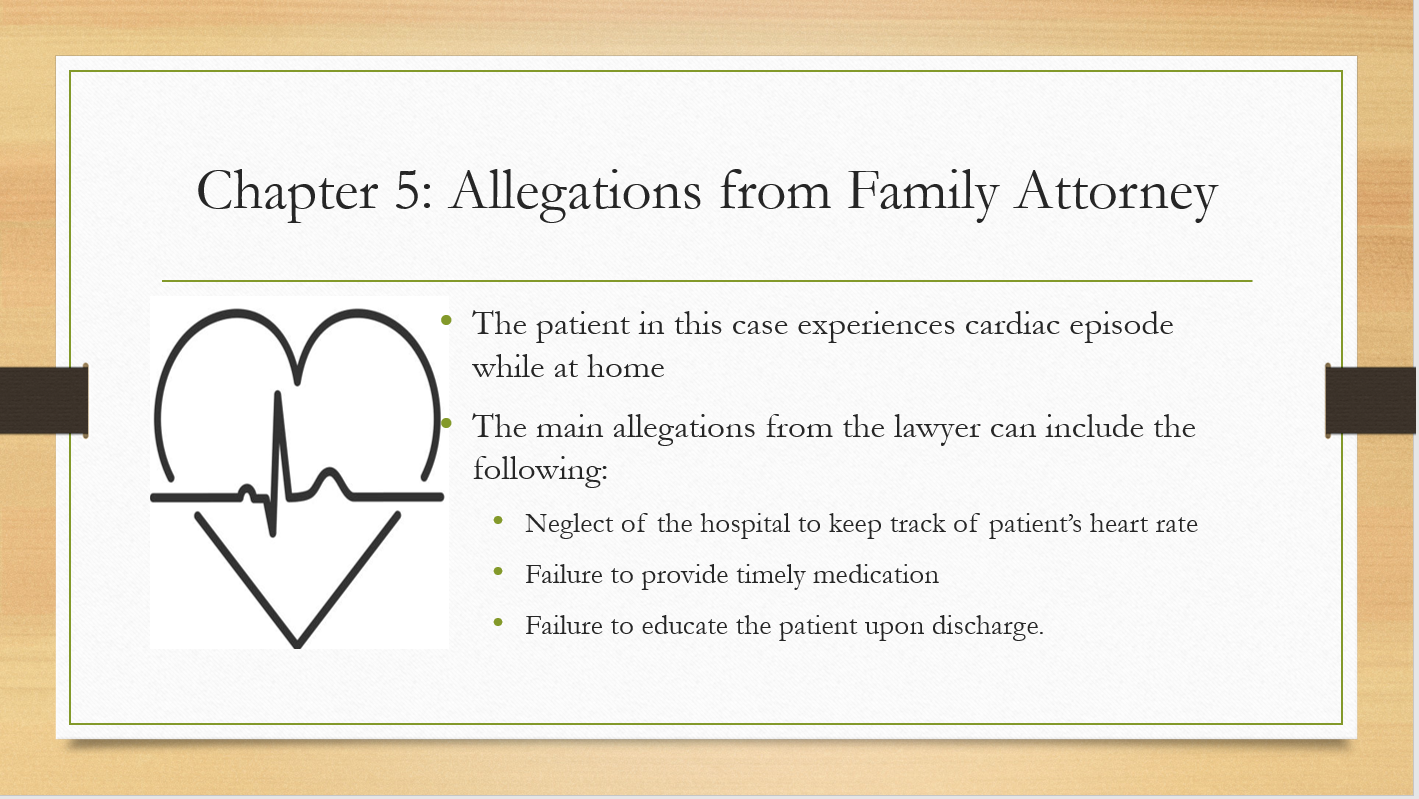
The allegations are based on the case study and can be used to identify charges against the hospital (Guido, 2020). The family attorney might argue that the hospital was careless in monitoring the patient’s heart rate, failed to provide the necessary medication promptly, and did not give the patient sufficient information about what to do after being discharged.
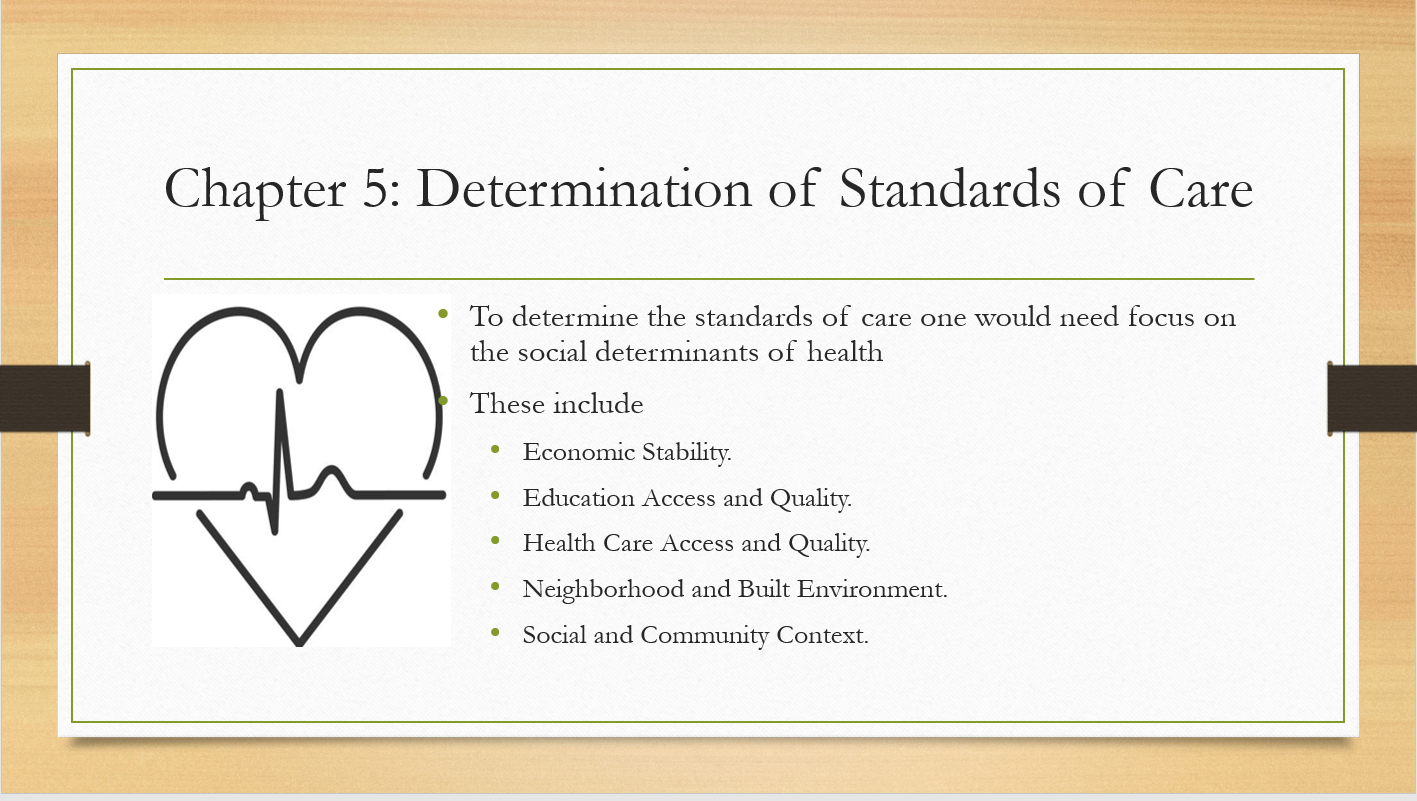
To determine the standards of care that the patients would be given in the future would require the analysis of the social determinants of care. The social determinants of health are the various aspects of the places where people work, play, worship, live, learn, and grow older that can have a significant impact on their health, well-being, and quality of life. These factors can affect a range of health outcomes and risks. These factors include
- Economic Stability.
- Education Access and Quality.
- Health Care Access and Quality.
- Neighborhood and Built Environment.
- Social and Community Context.
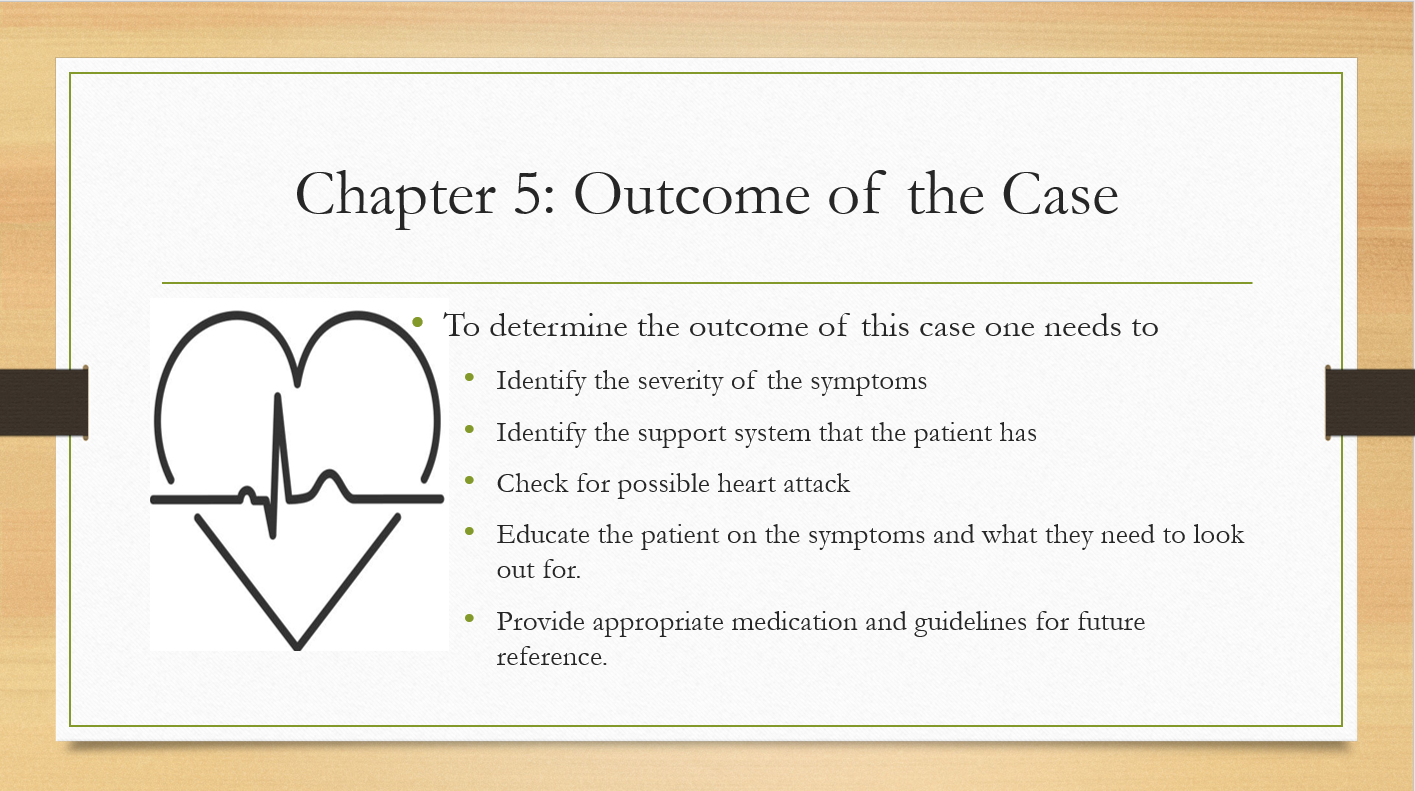
There are different ways to determine the outcome of the case where the patient was discovered to have an apparent cardiac event at home. While there are legal issues that have to be addressed, the health of outcome in relation t the health of the patient will focus on various things. For instance, there is need to identify the severity of the symptoms, identify the support system, check for possible heart attacks, and provide appropriate medication and guidelines for future references.
Chapter 6 case study
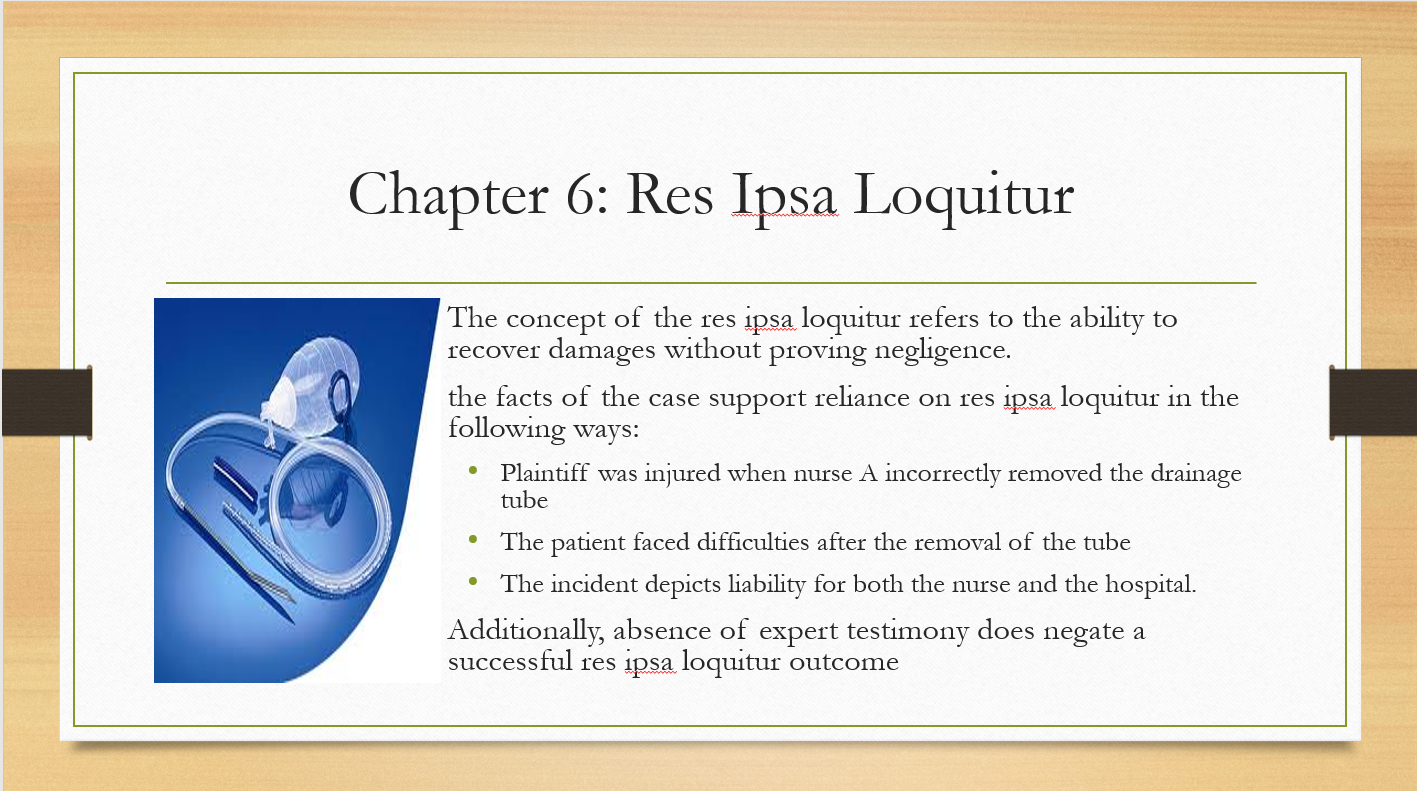
Res ipsa loquitur allows a plaintiff to recover damages without having to prove negligence, as long as it can be shown that an injury occurred (Guido, 2020). The plaintiff was injured when Nurse A improperly removed their drainage tube, causing problems. Both the nurse and the hospital are liable to a lawsuit in this case.
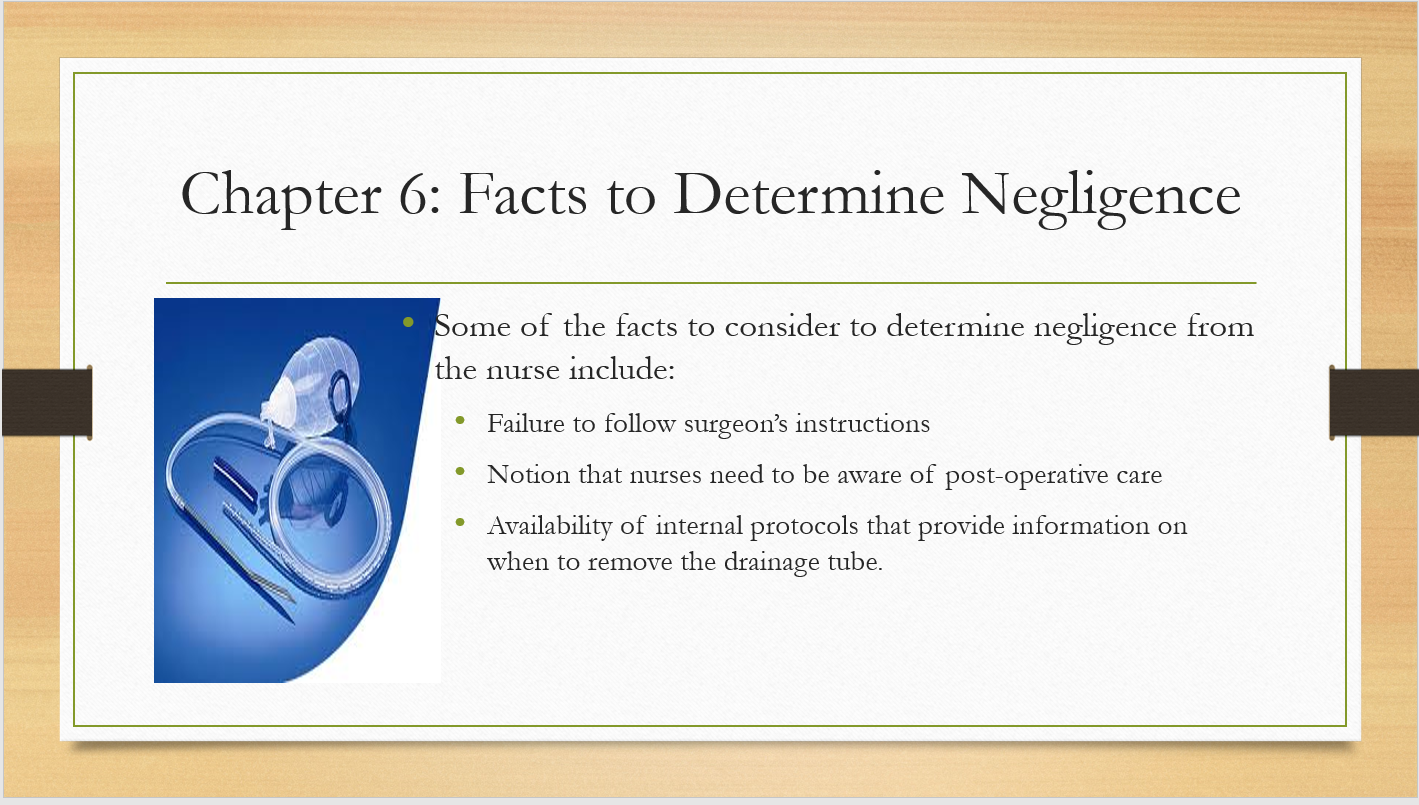
Some of the facts to consider to determine negligence from the nurse include the following. The inability of the nurse to consider the surgeon’s instructions as well when making medical intervention (Guido, 2020). A nurse with more experience is likely to have a better understanding of post-operative care. Some hospitals may have protocols in place stating that a drainage tube must be removed after a certain number of hours, while others may not.
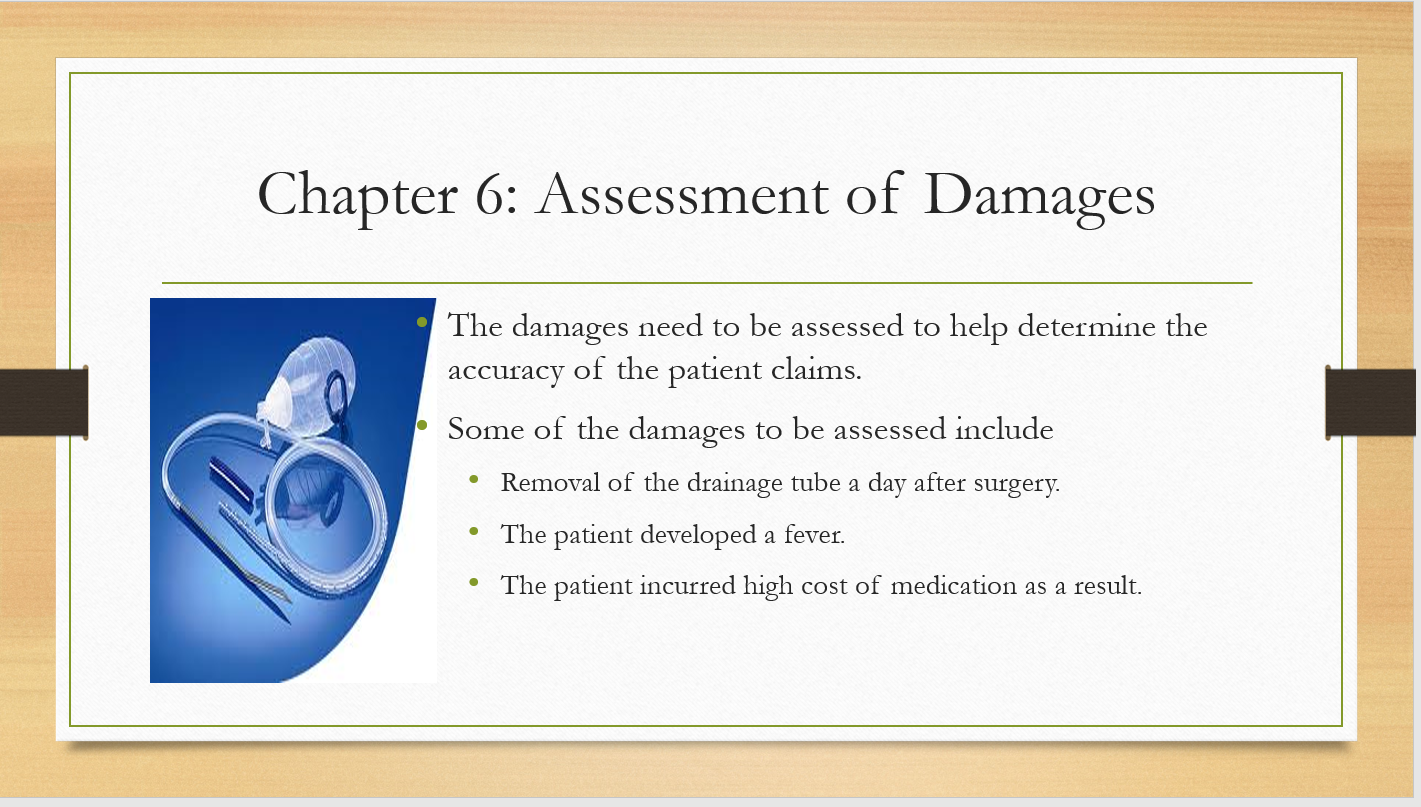
The damages need to be assessed to help determine the accuracy of the patient claims. In this case, various assessments can be made including how the A drainage tube was removed from a patient’s incision the day after surgery. As a result, the patient developed a fever the following day and had to be taken to the hospital. Finally, the patient incurred $5,000 in medical costs due to an infection caused by the nurs
Order this paper